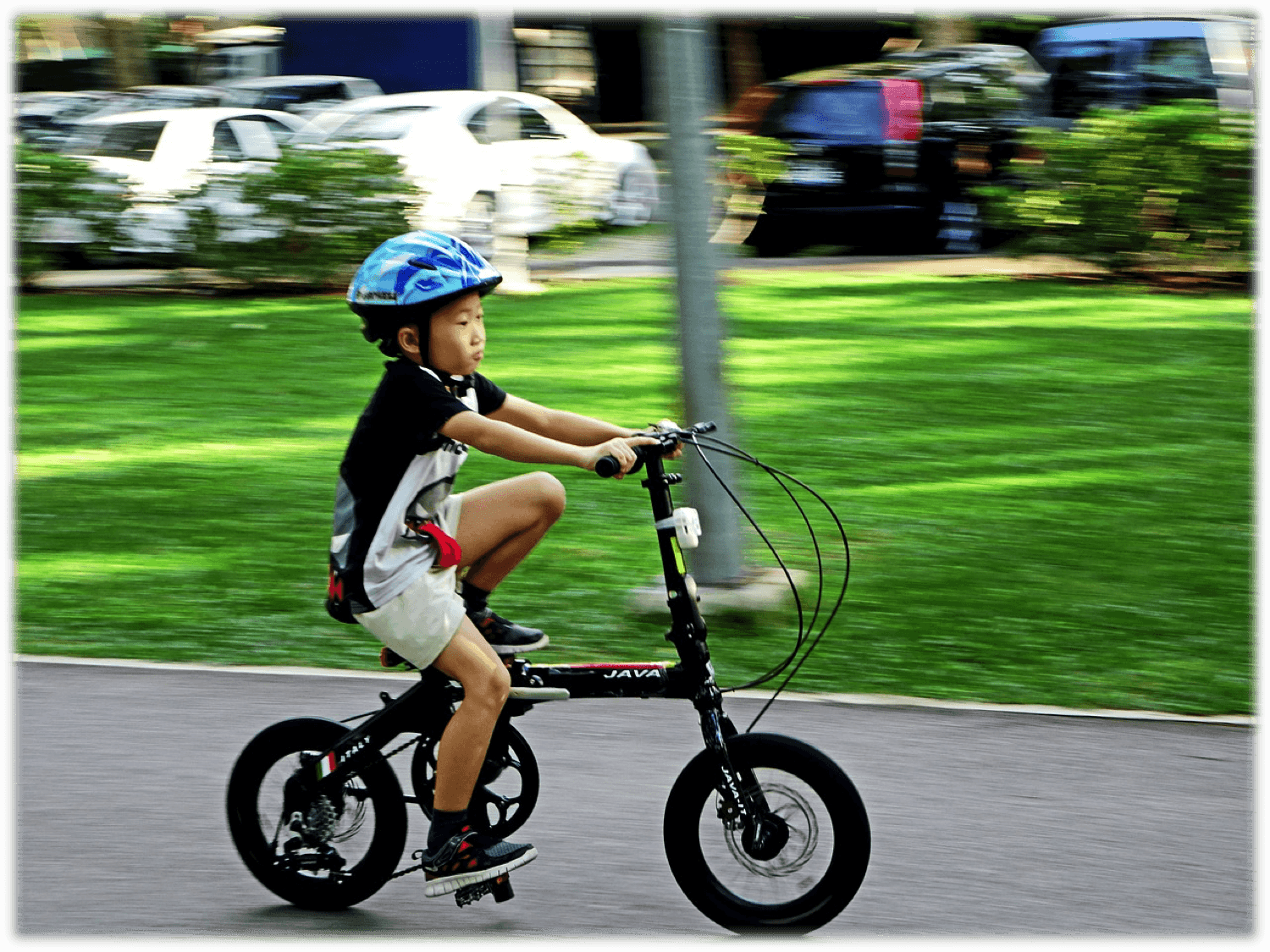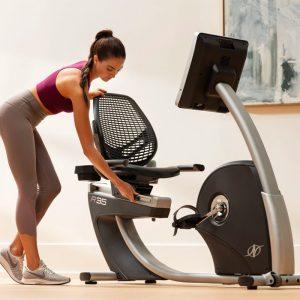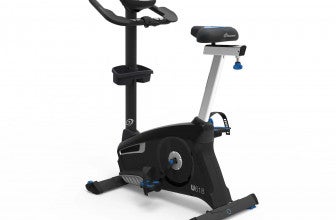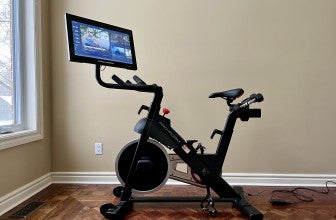
Choosing the Right Bicycle
- Choose a child’s bike based on their size instead of their age group.
- A child should be able to place both feet flat on the ground while sitting on a bicycle seat.
- Ensure that the child’s knees do not come up to the handlebars and that their feet can reach the pedals and their hands can reach the handlebars for easy maneuvering.
- Children’s growth rates will necessitate buying a new bicycle every few years.
- While there is no hard and fast rule for what bicycles fit a particular age group, children ages four to five years will typically need a wheel diameter ranging from 12 to 14 inches. Children nine years and older will typically need a bike with a wheel diameter of 24 inches.
- Bikes for very young children should have training wheels, while bikes for older kids should have coaster brakes or hand brakes.
- Typically, children older than seven years should be strong enough to use bicycles with hand brakes.
- Balance bicycles may serve as an effective alternative to bicycles with training wheels, as they teach the child to concentrate on remaining balanced.
Safety Equipment Tips
- Helmets are the most important equipment for any bicycle rider. This is especially true for children, who are more susceptible to brain injuries.
- Make sure to specifically purchase a bicycle helmet, as opposed to one for football, snowmobile-riding, or other activities. Only a bicycle helmet is appropriate for protecting a child from crash-related head injuries.
- A helmet should fit a child’s head and sit level. It should not be able to skew from side to side or slide forward or backward.
- Never wear anything under the helmet, such as a baseball cap or other head wear, as this will prevent a proper fit and reduce its effectiveness.
- Children should have their helmets secured with buckled straps, not just resting on their heads.
- Helmets should have bright or fluorescent colors so that vehicle drivers and other bicycle riders can see them.
- Ideally, a helmet should have ventilation to prevent overheating.
- Replace and do not reuse any helmet that has been involved in a crash where the child hits their head on anything. Helmets should also be replaced every three to five years.
- Children should wear gloves rated for bicycle riding as well as clothing with bright or fluorescent colors.
- When riding a bike, children should never wear pants that are overly loose at the bottom or around the ankles. These pants are more likely to get tangled with the bicycle chain.
- Carrying water during summer rides helps to prevent kids from dehydrating.
- Bicycles with reflectors in the front and rear and battery-powered headlights help to improve visibility to vehicles at night and during poor weather conditions.
Riding Safety Tips
- Children should never ride on sidewalks, and they should always use bicycle lanes when they are available.
- Instruct the child to never let someone ride on the bicycle along with them.
- Wearing headphones blocks out noise and prevents children from hearing traffic and other sounds that may alert them to a dangerous situation.
- Young children should never ride alone at night.
- Stay away from the sides of parked cars, as their doors may open unexpectedly.
- Carry all items, such as books, in an attached basket.
- Children should never take their hands off of the handlebars while riding.
- If riding in groups, ride in single file, not side by side.
- Avoid riding through puddles, as they may conceal potholes that can cause a crash.
- Stay away from wet leaves, as they can cause bicycles to slip and crash.
- Parents should quiz their children about riding safety laws and proper techniques.
- Children learn by example, so parents should always observe all bicycle laws and practice safe riding techniques. Children who are starting out should be supervised by their parents or legal guardians.
Bicycle Safety Laws
- Parents need to know the bicycle safety laws of their city and state.
- States have varying age requirements for when children must wear helmets, but it is essential for a child’s safety that they always wear a helmet while riding.
- Teach kids to use the proper hand signals. For left turns, they should look behind them and to the right and left, then hold out their arm straight, then slowly go into their left turn.
- To turn right, look to the rear, right, and left, then hold out the right arm straight and slowly turn right.
- To stop, look in all directions, then hold the left arm down to make an upside-down “L” shape, then slow to a stop.
- Children must stop at any stop sign or red traffic light that they encounter, and they should walk their bicycles across intersections and crosswalks with heavy traffic.
- Stay on the right side of the road, moving with traffic.
Bicycle Maintenance
- Children should be taught to inspect their bicycles regularly, starting with ensuring that the brakes react quickly and grab tightly. Replace them if they are worn.
- Tires should be kept inflated to their stated tire pressure levels.
- Keep the bike chain properly tightened. Clean and oil the chain a minimum of once per month.
- Ensure that the seat is secure and adjusted to the proper and comfortable riding height.
Resources
- How to Choose a Bicycle for Your Child
- Health Encyclopedia: Buying a Bike for Your Child
- A Bicycle Helmet for My Child
- Bike Safe, Bike Smart: Teaching Basic Traffic Skills to Kids
- Insights for Families: Bicycle Safety (PDF)
- Tips for Bicycle Safety
- Pediatrics Common Questions, Quick Answers
- Bike Safety
- Walk and Bike to School (PDF)
- Bike Safety Tips
- Safe Riding Tips
- Bicycle and Pedestrian Safety (PDF)
- Best Exercise Bikes
- A Safe Ride for Kids on Bikes (PDF)
- Favorite Bike Safety Tips and Resources for Kids
- Bicycle Safety Tips and Statistics
- Bikes and Safety
- Seven Tips for Cycling Safety (PDF)




